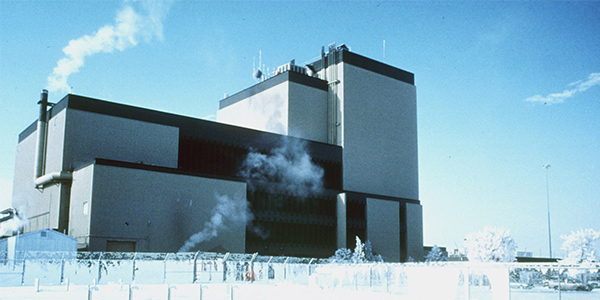Colorado’s Public Utilities Commission last week launched an investigation into the methane emissions released from natural gas infrastructure and the near-term actions needed to reduce them in order to meet the state’s greenhouse gas reduction targets.
Commissioner Megan Gilman kicked off a virtual information meeting on the issue on Feb. 1, briefly describing the PUC’s past efforts to curb GHGs before yielding the floor to hear presentations from stakeholders and experts.
Nationally, natural gas has become an ever growing portion of the resource mix, largely because of its net climate benefit, as it produces less CO2 than coal when burned, Anthony Marchese, associate dean and professor of mechanical engineering at Colorado State University, told commissioners. However, natural gas is almost entirely made up of methane, a far more potent GHG than CO2, he said.
“The problem is, if only a [small] percent of natural gas leaks out between the wells and the ultimate end use, then natural gas would have no immediate climate benefits compared to coal, gasoline or diesel fuel,” Marchese said.
In producing, consuming and transporting natural gas, leaks seem to be inevitable, and they were the biggest topic of conversation among stakeholders and commissioners. Reliable data on methane emissions is lacking, and the standard methods of sensing and repairing leaks currently used throughout the industry are out-of-date, CSU representatives and PUC staff said.
Joe Molloy, head of the PUC’s Pipeline Safety Program, told the commission that collecting data on methane emissions is difficult because widely accepted data-collection methods can be incomplete. They don’t always account for equipment failure that can cause large leaks, and they’re not continuous, he said, so they depend on surveys to collect data intermittently. This could prevent a local distribution company (LDC) from finding and repairing a leak as soon as possible.
Joe von Fischer, associate professor of biology at CSU, spoke about advanced leak detection (ALD) technology and his experience working with LDCs to find and repair leaks that would be missed using standard technology. Using laser spectroscopy in emissions surveys allows for high-sensitivity methane analysis, he said. By using GPS, ALD surveys can detect a leak’s location, allowing LDCs to easily find the issue. Because the new technology also detects methane concentration, it can give LDCs information on a leak’s magnitude that allows them to prioritize repairs.
“In the case of the U.S. natural gas distribution system, we estimate that half of emissions in the U.S. are coming from the largest 16% of leaks,” von Fischer said. By making ALD surveys the standard, the largest sources of methane emissions can be reduced in the near term, he said.
But because of intermittent leaks, scheduled surveys may miss a large portion of escaped methane, said Caroline Alden, research scientist at University of Colorado Boulder and co-founder and director of operations at LongPath Technologies. LongPath studies and provides continuous monitoring, a method that uses autonomous long-range laser systems to constantly monitor methane emissions. She said that without wide implementation of the technology, it will be difficult to reduce emissions to target levels.
Representatives from Xcel Energy echoed Adlen’s concerns, saying the advanced technologies are necessary to significantly reduce methane emissions from the supply chain but are not widely available. In the meantime, the utility is trying to mitigate natural gas emissions upstream, verifying that their suppliers are not producing excessive GHGs and considering renewable natural gas options like hydrogen.
Commissioner Eric Blank was most interested in learning about the costs associated with finding and repairing the largest sources of methane emissions, but CSU representatives were wary in providing an estimate.
“Costs are pretty tough,” Marchese said. “The reasoning is, we’re typically working in coalitions or with combinations of oil and gas partners, and in those meetings, because of anti-trust concerns, they cannot disclose that information.”
Jokingly, Blank told Marchese that was not the answer the commission was hoping to hear.



